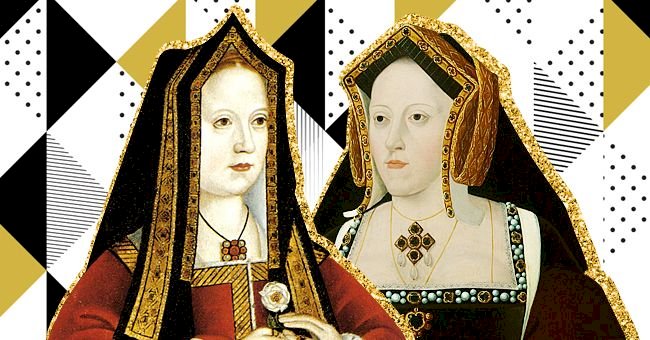
The True (And Often Tragic) Love Stories of 10 Tudor Queens
The Tudors are undoubtedly the most fascinating dynasty in the history of the British monarchy and over 500 years after its beginnings, their scandals and love affairs are still front-page news.
In 1485, Henry Tudor, a young nobleman who would later be known as King Henry VII won a decisive battle at Bosworth Field, defeated the villainous King Richard III, and ended the ruinous War of the Roses.
In order to cement his claim on the throne (which was tenuous), Henry quickly married King Edward V's daughter Elizabeth of York, Princess Royal. The niece of the defeated King Richard III became the first Tudor Queen and the founder of a dynasty that would comprise 5 monarchs -- and 10 queens.
Elizabeth of York - The Reluctant Tudor Queen
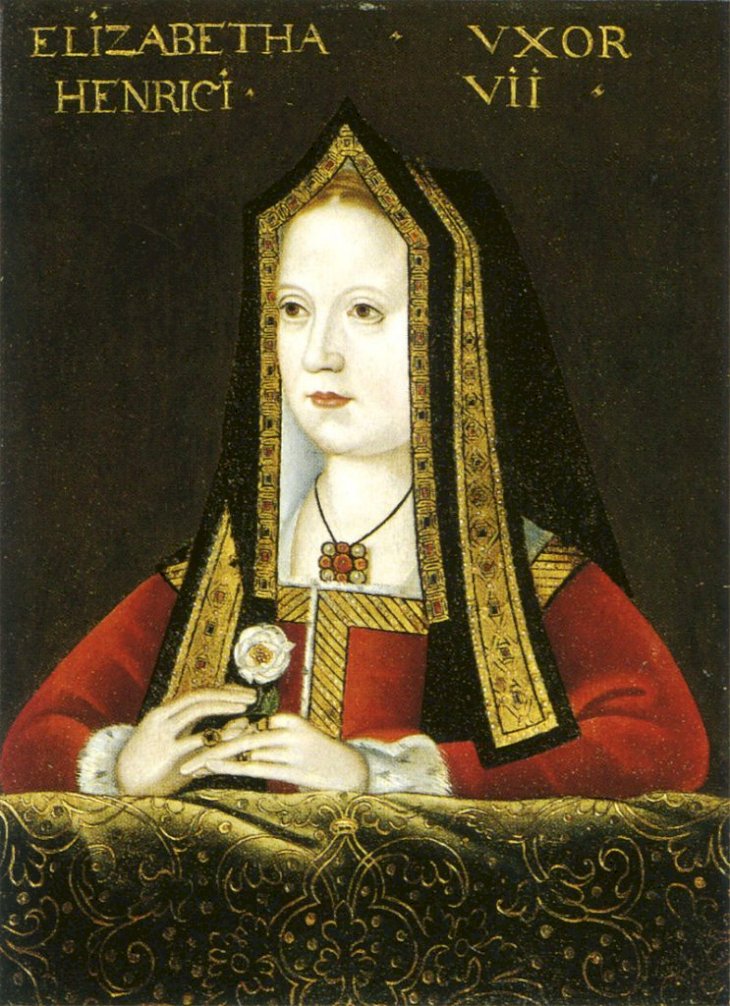
Elizabeth of York | Public Domain
The marriage between Henry and Elizabeth had been arranged by two formidable women, the Dowager Queen Elizabeth Woodville, Edward V's widow, and Lady Margaret Beaufort, a ferociously ambitious woman who had scheming for her son's ascension to the throne since his birth.
Elizabeth was just 20 years old, and considered one of the most beautiful women in Europe. She had been an adornment at the court of her uncle Richard III, and court rumors had linked her romantically with her uncle the king. It became such a scandal, that after his wife's death, Richard III was forced by parliament to emit a statement that he would not be marrying his niece...
Contemporary accounts, however, describe Elizabeth as very much in love with her uncle, but she was forced into marriage with his killer and bore him 7 children.
Catherine of Aragon - The Widowed Bride
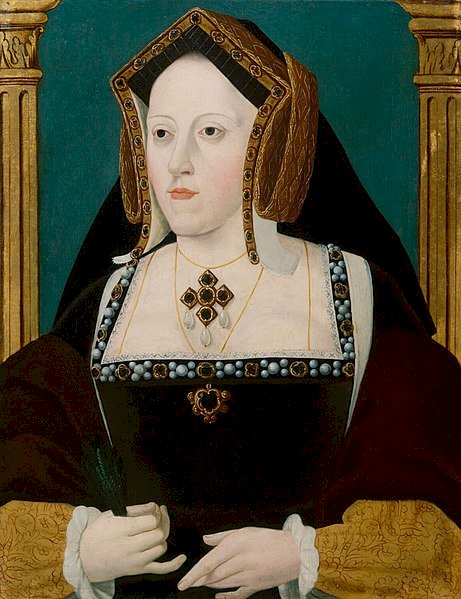
Catherine of Aragon | Wikimedia Commons/ Public Domain
In 1501 Catherine of Aragon, Princess of Spain, arrived in England to marry Arthur, Prince of Wales, the oldest son of Henry VII and Elizabeth of York. The Princess was described as dainty, and exceedingly pretty with auburn hair and blue eyes. The marriage took place with suitable pomp, but within 6 months, the bride was widowed.
Her handsome Arthur, just 16 succumbed to a disease known as "the sweat," and Catherine was stranded at court. Her father-in-law refused to give her her widow's settlement because her father, King Ferdinand had yet to pay her dowery, and the Dowager Princess of Wales lived in poverty among the luxury of the Tudor court.
In order to legally withhold the settlement, Henry VII engaged her to his younger son, Henry, but until he died, she was never acknowledged as a royal bride. When Henry VIII became king, he immediately insisted on marrying the Spanish Princess and declared himself her Sir Loyal Heart. Sadly, he would later repudiate her to marry Anne Boleyn, claiming that she had had carnal knowledge of his brother Arthur on her wedding night.
Anne Boleyn - The Murdered Queen
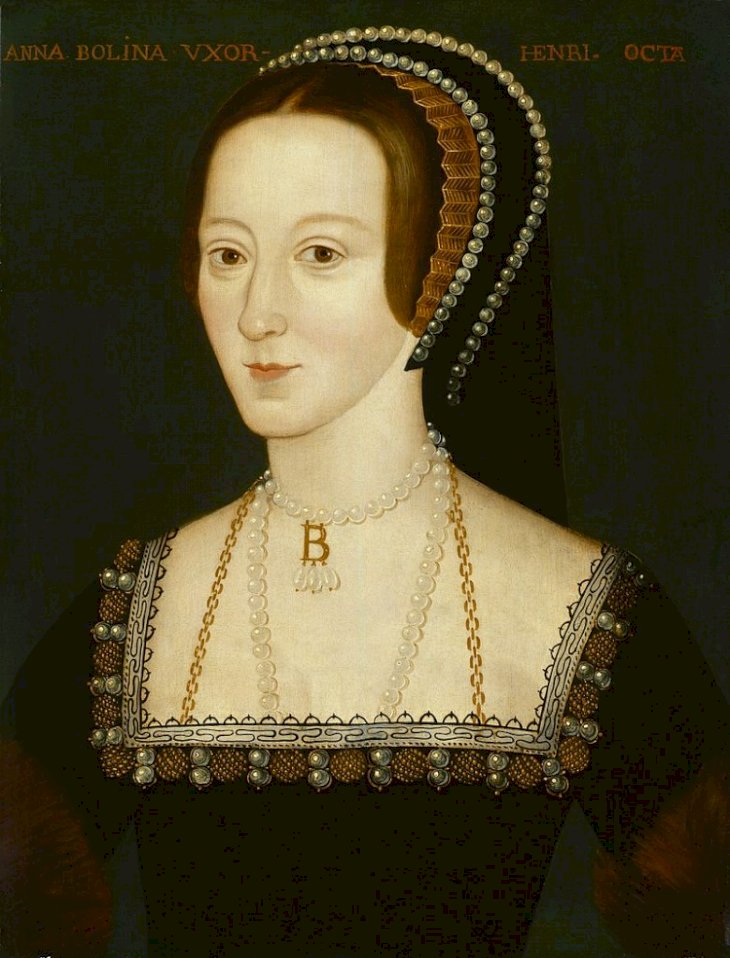
Anne Boleyn | Wikimedia Commons/ Public Domain
Anne Boleyn has become the most famous of Henry VIII's queens. At the time of her death, she was accused of witchcraft, adultery, and incest with her own brother, and was beheaded for her supposed crimes.
But Anne was far from the ambitious schemer she has been portrayed. She was a highly educated young woman, raised in the sophisticated French court before her father summoned her back to England. And Anne wasn't interested in the King. Anne was in love with Henry Percy, the son of Henry Percy, 5th Earl of Northumberland, and the couple was secretly engaged.
Unfortunately, Percy's father considered Anne unsuitable to marry into his family, and the engagement was broken off. Shortly after that, Anne caught Henry VIII's eye, and he was to pursue her relentlessly for the next 8 years. The rest of the story, we all know... Henry's disenchantment when Anne failed to bear a male heir, her trial for adultery and treason. But what many may not know, is that among the jury was her first love, Henry Percy, who was forced to deliver a guilty verdict that meant the death of the woman he had once loved.
Jane Seymour - The Ghost Queen

Jane Seymour | Wikimedia Commons/ Public Domain
The driving preoccupation of Henry VIII's life was the lack of a male heir. His mother had borne his father 7 children, 4 of which had survived to adulthood; his grandmother Elizabeth Woodville had given Edward V 10 children, and his great-grandmother, Jacquetta of Luxembourg had produced 14 healthy children.
Henry needed a fertile bride, and his eye fell on a quiet, modest girl who had been a devoted lady in waiting to his first wife, Catherine of Aragon. His chosen bride was Lady Jane Seymour, and unlike his first two wives, she was not an intellectual or a brilliant conversationalist -- but her mother Margaret Wentworth had given birth to 10 children.
Queen Jane proved to be fertile, and within a year, she gave the King the son he longed for. Sadly, she died two weeks later from what we now presume was an infection. Although the King did not attend her on her death bed, he became quite sentimental about poor quiet Jane, and had her painted into the Royal family portraits as his "one true queen."
Anne of Cleves - The Unwelcome Queen
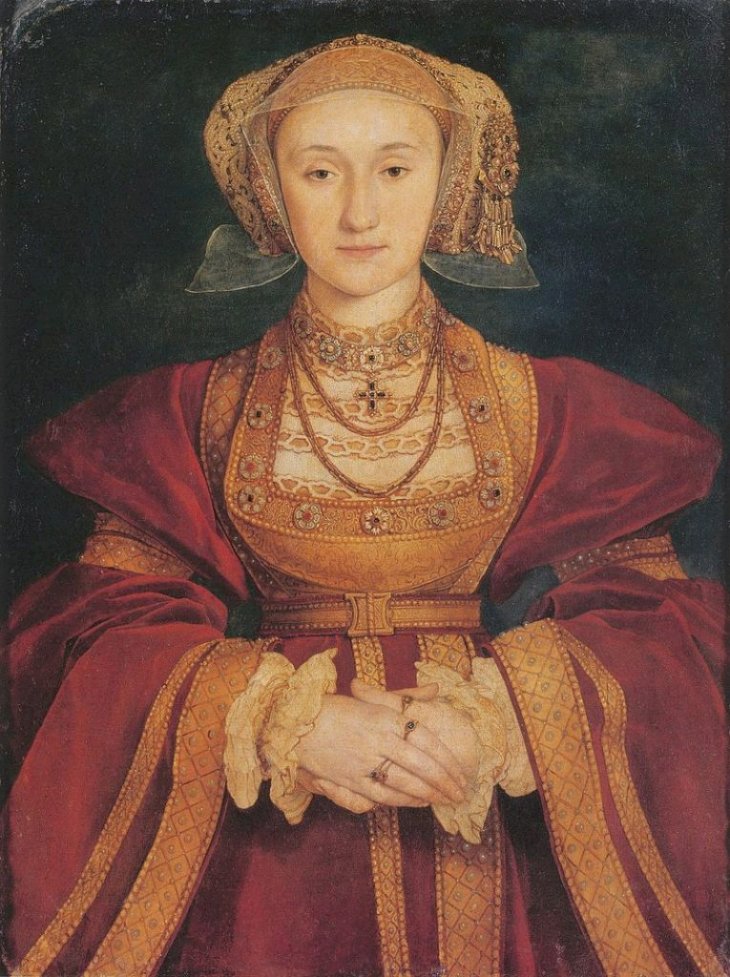
Anne of Cleves | Wikimedia Commons/ Public Domain
Henry had his son and heir, but that just wasn't enough. He had seen witnessed the death of his brother Arthur, and he wanted "insurance," he had to have a new bride and more sons. Two years after Queen Jane's death, Henry, now enormously fat and suffering from supporting leg ulcers, sent his ambassadors all over Europe looking for the perfect Princess but he was in for an unpleasant surprise.
His matrimonial track record made eligible princesses reluctant, and one daring princess told his ambassador that she couldn't possibly marry Henry, since she had only one neck... Henry had to turn to fewer august personages in search of a bride and received a charming portrait of the Duchess Anne of Cleves. He eagerly proposed and was accepted, but was in for a disappointment.
Anne was less attractive than he had hoped, and she was just as disappointed with him. The marriage proceeded as planned, but was never consummated. Henry arranged for a divorce with a generous settlement, which Queen Anne eagerly accepted. She got to keep her head, outlived him, and was a close friend of his children for the rest of her life -- possibly the only one of Henry VIII's queens to live happily ever after.
Katherine Howard - The Child Queen
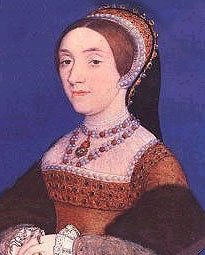
Katherine Howard | Wikimedia Commons/ Public Domain
One of the reasons Henry was so eager to divest himself of his German Queen was that he was already courting his next wife. His eye had fallen on one of her young ladies in waiting, the beautiful Katherine Howard, who happened to be a cousin of Anne Boleyn and a member of the powerful Howard family.
Katherine was no older than 16, and more likely 14, and would have had no choice but to accept her bridegroom, in his early 50s, fat, lame, and uncertain of temper. Little Queen Katherine was doted on by the ailing King, showered with gifts and jewels, but she was in love, and not with her husband.
Henry was horrified to discover that his silly child-bride was having an affair under his nose with her handsome young cousin, Thomas Culpepper, who was also a favorite of the king. The King had the young Katherine executed in the Tower of London after her beloved Thomas gave up his life for loving her.
Catherine Parr - The Last Queen
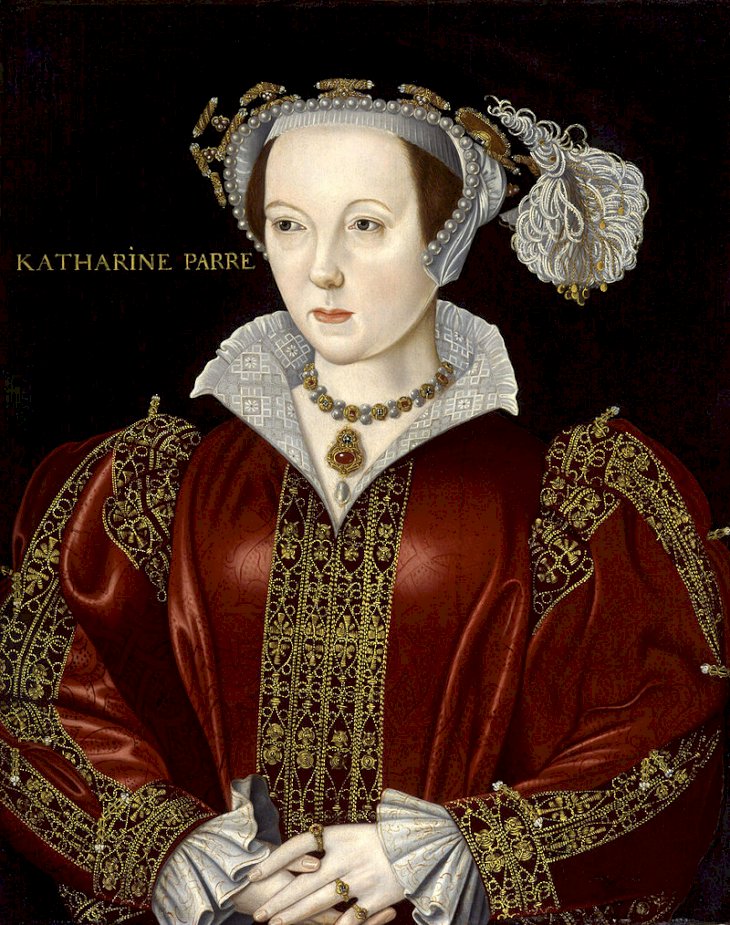
Catherine Parr | Wikimedia Commons/ Public Domain
Henry was now 52, and lonely. He still believed he could father a child, and he wanted a new wife. He noticed a pretty young widow at court, Catherine Parr, and decided that she would be the perfect wife and stepmother for his children.
Poor Catherine was in love, but not with the King. She was in a dizzy romance with Thomas Seymour, the most handsome man at court and the KIng's own brother-in-law... But since to deny the King would mean death for herself and her beloved, Catherine agreed to marry Henry and managed to survive his malice and disenchantment.
Having outlived Henry, Catherine immediately married Thomas Seymour and was pregnant with his child when she discovered that he was conducting an affair with her teenaged stepdaughter, Princess Elizabeth, under her very roof. Catherine gave birth to her longed-for-child, but died shortly after, of what her contemporaries described as a broken heart.
Margaret Tudor - Queen of Scots
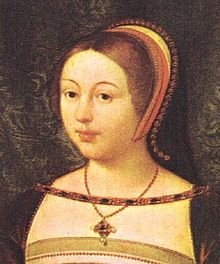
Margaret Tudor, Queen of Scots | Wikimedia Commons/ Public Domain
Henry VII was an ambitious man, and he was eager to legitimize his brand new Tudor dynasty by marrying his children into Europe's royal houses. He arranged to marry his oldest daughter, Margaret, to James, King of Scotland, hoping to heal the breach between the two nations, and gain a toe-hold in the northern territories.
At the age of 14, Margaret was sent north with a lavish dowery and a great retinue to marry the King of Scots who was 30 years old and known for his many mistresses and illegitimate children. The new Queen clashed with her husband frequently over his infidelities, and over their 10 years of marriage bore him 6 children, only one of which survived, King James V of Scotland.
James was killed in battle against England, and Margaret was left as Regent of Scotland. Unfortunately, she was seduced by Archibald Douglas, 6th Earl of Angus, who married her, appropriated her wealth and power, and was equally unfaithful. Margaret managed to divorce him, but her choice in her third husband was equally unfortunate. He too cheated on her, but her son forbade divorce, and she lived unhappily ever after.
Mary Tudor - Queen of France
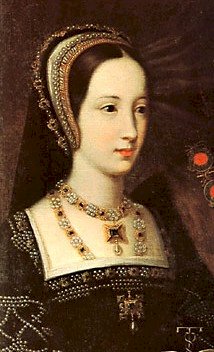
Mary Tudor, Queen of France | Wikimedia Commons/ Public Domain
Henry VIII was not above following his father's strategies and using his beautiful baby sister Mary as a dynastic pawn. In 1514, Henry arranged for Mary, then 19, to marry Louis XII of France, 30 years her senior, and a man know for his lecherous ways.
The Princess refused, but her brother pointed out that her future husband was old and ailing, and not like to live very long. Henry promised Mary that once widowed, she'd be free to choose her own husband, and on that condition, she agreed to marry Louis. Unwisely, Henry sent his sister off to her wedding escorted by his own best friend, the handsome Charles Brandon.
The Mary and Brandon fell in love and the determined new Queen of France led her elderly husband on what contemporaries described as "a merry dance." Louis died of exhaustion within three months, and Mary married Brandon in secret. Henry was furious and exiled the couple from the court, but eventually relented. Mary died at the age of 37, and through her daughter, Frances Grey was the grandmother of yet another ill-fated Tudor Queen.
Lady Jane Grey - Queen for 9 Days
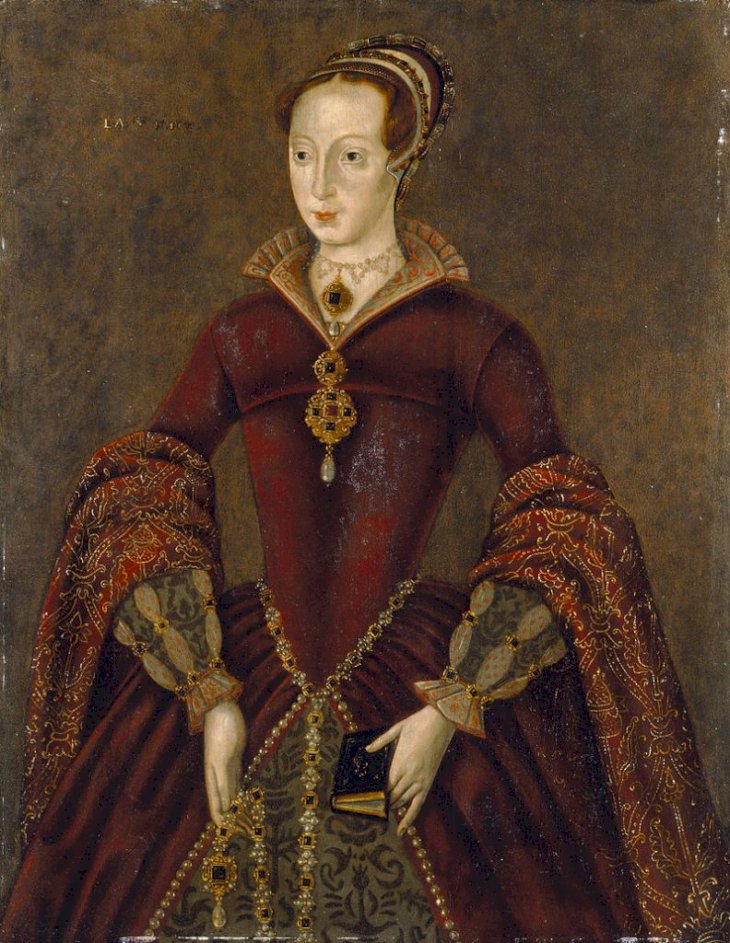
Lady Jane Grey | Wikimedia Commons/ Public Domain
Saddest of all the Tudor queens is little Lady Jane Grey, who was shoved onto the throne by ambitious men and as quickly disposed of by her ruthless cousin, Queen Mary Tudor. Jane, the granddaughter of Princess Mary Tudor, was raised in the household of her cousin, King Edward VI, Henry VIII's only male heir.
Like the young King, Lady Jane was a Protestant, and as Edward's health failed, his chief minister John Dudley, Duke of Northumberland hatched a plan to keep himself in power. He encouraged Edward to draft a will in which he left the throne to his cousin Jane, then quickly married her to his own son, Lord Guildford Dudley.
Jane was reluctant to marry Guildford, or claim the throne, but was literally forced by her ambitious parents and the Duke. After Edward's death, they declared Jane Queen of England, but just 9 days later she was deposed and Mary Tudor, Henry VIII's oldest daughter became queen. Jane, just 16, was later executed by Mary for treason, even though she had been an unwilling participant in the plot.
Queen Mary Tudor, and Queen Elizabeth I was both monarchs, women who held power in their own right in a world dominated by men, and yet they too were as unfortunate in their love lives...
But that is a story we will tell you another day.